What Are The Sparkling Wine Classifications?
9th November 2022
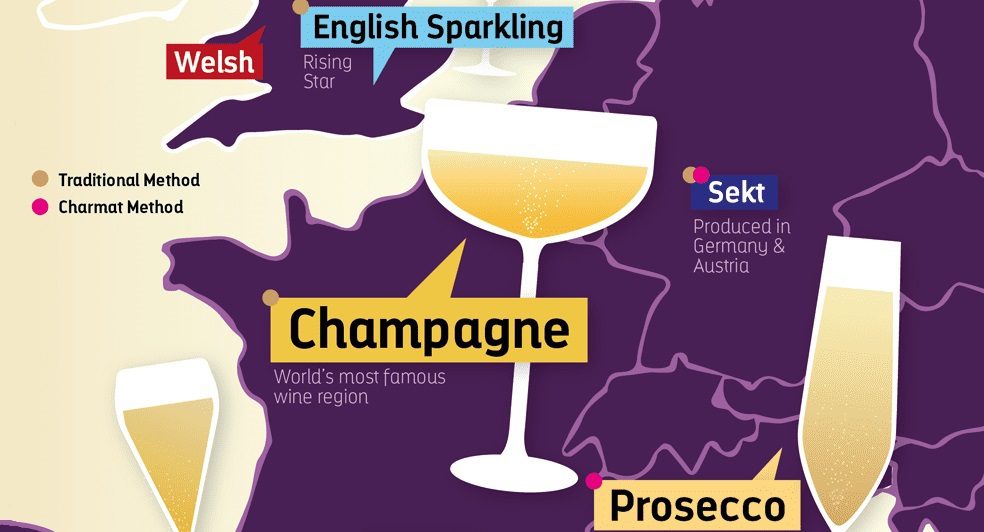
Each country has its own classifications for its Sparkling Wines, for example, France has the Champagne Region and in that region, you’ll find the likes of Grand Cru and Premier Cru, but what do they mean?
In the Prosecco Region in Italy, you’ll find DOC and DOCG, do you know what that really tells you?
Plus what does Cap Classique mean or how about Marlborough Methode?
Let’s find out all, by going through some of the Classifications of Sparkling Wine.
Champagne Classifications
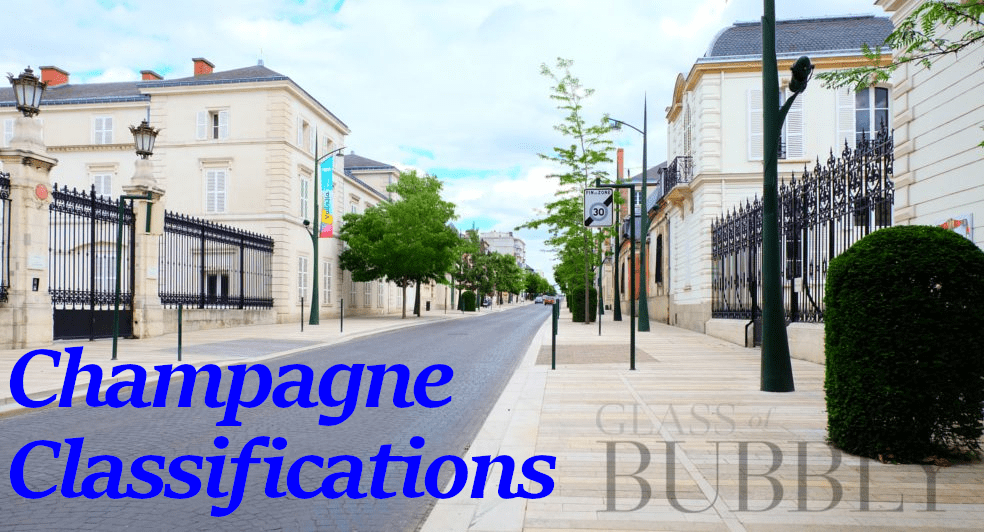
In the Champagne Region, there are three classifications that help you identify an increase in quality, each of these classifications, from lowest to highest, is said to produce a finer quality of grape and each classification is more exclusive.
The highest form of Champagne is Grand Cru, followed by Premier Cru, then by Autre Cru, you can only label your Champagne as a certain type of Cru if it was produced in a certain area that has been determined to meet a higher quality standard.
There are only 17 villages that can produce Grand Cru Champagne and 43 villages that can produce Premier Cru Champagne.
The reason for these classifications is based on the terroir, including the quality of fruits, soil make-up, slope positioning, and other factors.
You won’t always find any mention of the word ‘Cru’ on a label, but that doesn’t mean that Champagne is any less enjoyable to drink.
When Was The Cru System Created?
In the 1920s, following threats of riots from vine growers who felt poorly treated and undervalued with the price given to their grapes far below what was deserved or required, this is what prompted the creation of the Échelle des Cru system, which means the Cru System Scale.
Prosecco Classifications
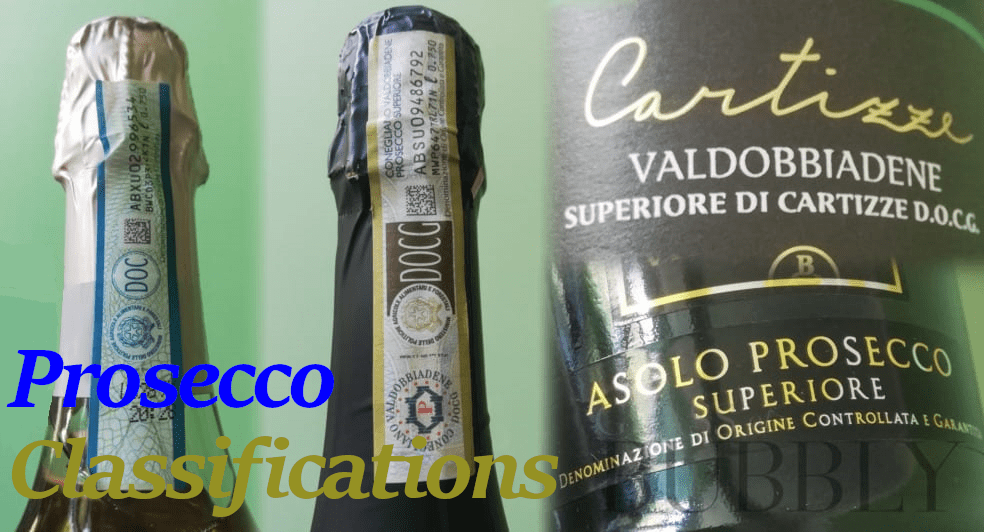
The main recognisable levels of Prosecco come in the form of a label around the neck of the bottle, the standard level is a light blue label stating ‘DOC’ and the higher quality comes in a brown label stating ‘DOCG’.
What Does DOC and DOCG Stand For?
DOC stands for ‘Denonimazione di Origine Controllate’ and DOCG stands for ‘Denominazione di Origine Controllata e Garantita’.
That’s not all, DOC and DOCG are the main ways to tell the different levels of quality, but there are some extra words that can be found on the label, that help you identify the levels of Prosecco.
DOC – Prosecco – DOC Prosecco is grown on the flat Vineyards of Prosecco, as of 2020 Prosecco DOC had 24,450 hectares of vineyards with 1,169 winemakers and 347 Prosecco houses. Rosé Prosecco comes under the DOC classification.
DOCG – Prosecco Valdobbiadene Superiore – All DOCG Prosecco is produced from grapes grown on hillside Vineyards and are only handpicked, this area is between Valdobbiadene and Conegliano
DOCG – Asolo Prosecco Superiore – Considered to contain a finer terroir to grow grapes.
DOCG – Prosecco Valdobbiadene Superiore Rive – Only 43 communes can be labeled as such.
DOCG – Prosecco Superiore di Cartizze – Only 265 acres are within the Cartizze area, it is considered the best terroir in the Prosecco Region, in Valdobbiadene
In 2020, 500 million bottles of Prosecco DOC were made, turning over an estimated 2.4 billion euros. Villa Sandi, one of the Proseccos which we tasted with Neil Phillips, turned over 121 million euros in 2021, which was an increase of 33% from 2020.
Cava Classifications
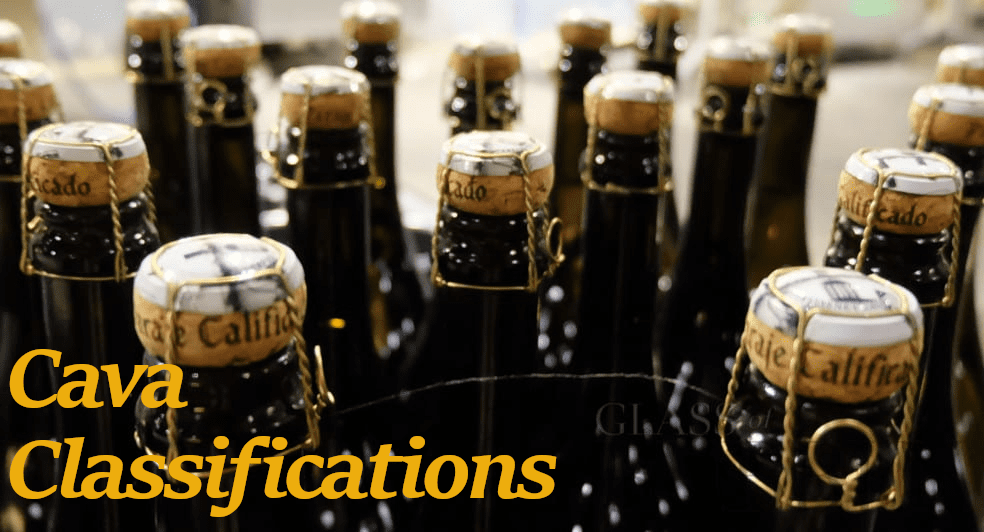
Cava is the third big name in the Sparkling Wine industry, after Champagne and Prosecco. About 95% of all Cava is produced in the Catalan region of Penedès, west of Barcelona. The village of Sant Sadurní d’Anoia is home to two of the major producers Codorníu and Freixenet.
Its classification is regulated by the Cava D.O. Regulatory Board (Consejo Regulador de la Denominación de Origen) the D.O. means ‘Designation of Origin’
The Cava D.O. is composed of three quality terms that define the geographic zones and the various sub-zones within these zones. These are:
First Level: Regionalization by geographic and climatic conditions as established by the D.O. for the four principal geographic zones.
Second Level: Sub-zones defined by specific climatic, orographic, historic or human conditions that justify the specific classification and coincide with existing wine regions.
Third Level: Paraje Calificado (Specific Site or Single Estate) defined by the identification of the specific parcels that make up the zone including soils, climate and vines that differentiate these from the surroundings.
You’ll also find the following stated on a Cava label, they each refer to a different level of ageing.
Cava – Requires 9 Months of Ageing
Cava Reserva – Requires 18 Months of Ageing
Cava Gran Reserva – Requires 30 Months of Ageing
Cava de Paraje Calificado – Requires 36 Months of Ageing
South African Classifications

Method Cap Classique, these words will only ever be found on a bottle of South African Sparkling Wine produced in the Traditional Method (the way they make Champagne).
Back in the day, South Africa was one of the first countries to start making Sparkling Wine in the Traditional Method, but with a desire to be identified as South African Sparkling Wine in the same way as Champagne, they created the name Method Cap Classique.
Method Cap Classique is just South Africa’s way of saying Traditional Method, it started getting known across the globe, and today the words ‘Method Cap Classique’ help you identify that the Sparkling Wine is from South Africa and made using the Traditional Method.
New Zealand Classifications
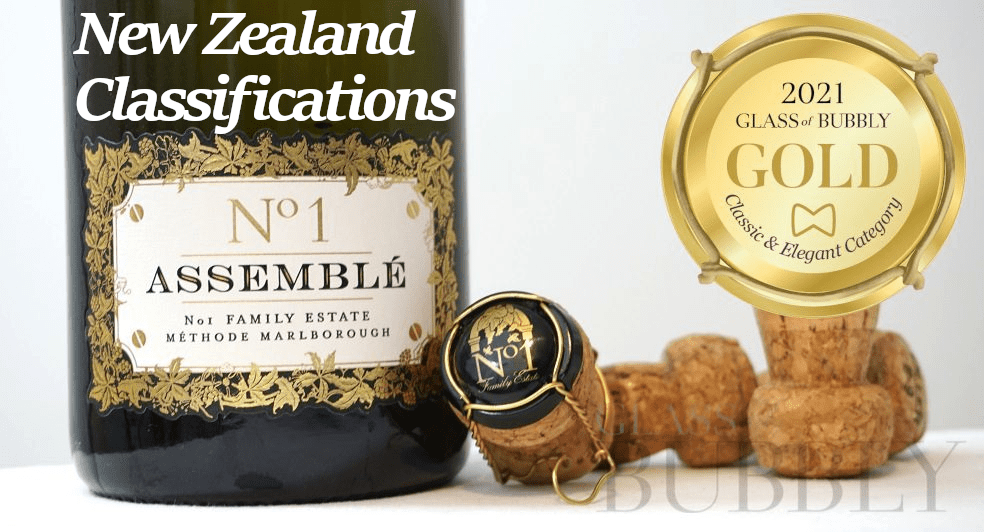
In 2012, No.1 Family Estate released their No.1 Assemblé which was the very first wine in New Zealand to be labeled as ‘Méthode Marlborough’ in place of Méthode Traditionelle.
Since then the Méthode Marlborough became a name associated with New Zealand’s Traditional Method Sparkling Wines, but as you may have guessed, only Marlborough producers can label their Sparkling Wines as Méthode Marlborough.
They use it to help showcase, what they believed to be a finer quality of New Zeland Sparkling Wine, only made in the Traditional Method (Méthode Marlborough), each bottle must be aged for at least 18 months, just like Champagne, but the Marlborough producers often increase the aging to 36 months, with some regularly going up to 7 to 10 years, in the aim of producing the best Sparkling Wines.
The Méthode Marlborough group is always open to accepting new members, if you decide to join there are only a few rules each winery must follow.
- Wines must be grown, bottled, matured and disgorged in Marlborough
- Wines must be made using the traditional method of production
- Wines must be produced with classic sparkling varieties only (Pinot Noir, Chardonnay, Pinot Meunier)
- Wines must be aged for a minimum of 18 months on lees to the first disgorgement of any batch
English Sparkling Wine Classifications

English Sparkling Wine can only be made in the Traditional Method, (the way they make Champagne), if an English Winery wanted to make their Sparkling Wine in the Charmat/Tank Method (the way they make Prosecco) they can’t label themselves as English Sparkling Wine, instead, they must state something different, like Sparkling Wine Made In England.
The classifications of English Sparkling Wine are constantly evolving, it’s still fairly new and as of right now, they are yet to find the perfect wording or to find the best areas for growing grapes, it’s unknown if they will decide to create a region like Champagne or Prosecco, or if they will continue to allow English Sparkling Wine to be produced anywhere in the country.
There are some new classifications on the rise in England, but the very important thing to note is that they are all optional and not required to follow.
PDO – Protected Designation of Origin – This is what they are labeling as the top standard of English Sparkling Wine and allows to you use the word ‘English’ or ‘Welsh’ on the label, but to gain PDO classification, you can only use these 6 grape varieties, Chardonnay, Pinot Noir, Pinot Meunier, Pinot Noir Precoce, Pinot Blanc and Pinot Gris, the grapes must come from the country you are making your Sparkling Wine, with no hybrids allowed.
Just this year, Sussex earned PDO status. Sparkling wines can only be called ‘Sussex’ if they are grown in the region of West Sussex and East Sussex and meet a strict set of conditions.
Sussex sparkling wine must be made in the traditional method, predominantly from classic sparkling wine grape varieties: Chardonnay, Pinot Noir and Pinot Meunier which are grown in the region. The following grapes may all be used: Arbanne, Pinot Gris, Pinot Blanc, Petit Meslier and Pinot Noir Précoce.
PGI – Protected Geographical Indication – To get PGI classification you are allowed to use 88-90 vine varieties, including hybrid grapes, you’re allowed to state ‘English Regional’ or ‘Welsh Regional’ on your label and can use 15% of grapes grown from another country in the UK, so England, Wales, Scotland or Northern Ireland.
Varietal – This is the bottom of the pile, sitting at a questionable level, if it’s a vintage, at least 85% of the grapes must have come from that year, 85% of the grapes used in the wine must be the stated variety or 100% of the stated varieties in order of prevalence and these bottles can only be labeled as ‘Varietal Wine’, you couldn’t use ‘English’ or ‘Welsh’ or ‘English Regional’ or ‘Welsh Regional’ on the label.
You can currently buy land and plant vines anywhere in England and start producing English Sparkling Wine or Sparkling Wine Made In England.
Germany and Austria – Sekt Classifications
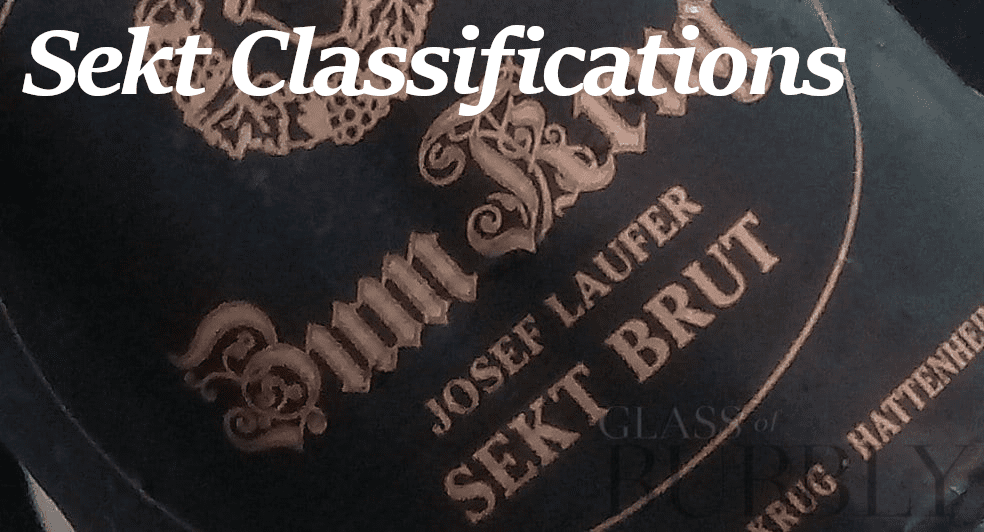
In Germany and Austria, if you look at a Wine label and don’t see the words Sparkling Wine, instead only seeing the word ‘Sekt’, then rest assured you are looking at a Sparkling Wine
Sekt translates to Sparkling Wine, it is far less protected and overseen as the likes of Champagne, but it is a word that tells you’re enjoying either a German or Austrian Sparkling Wine.
Sekt was introduced to the winemaking world in the 1820s, but back then the quality of wines was far below the standard we have today, although this did make it very affordable for everyone to enjoy a Glass of Bubbly.
Just like in other countries, a quality level system was put in place to help showcase the finer levels of their Sparkling Wines, the list below is from standard to the highest quality of Sekt.
- Sekt
- German Sekt
- Sekt b.A.
- Winzersekt
You can also see Deutscher Sekt, which tell you that all the grapes in the bottle were grown in Germany.
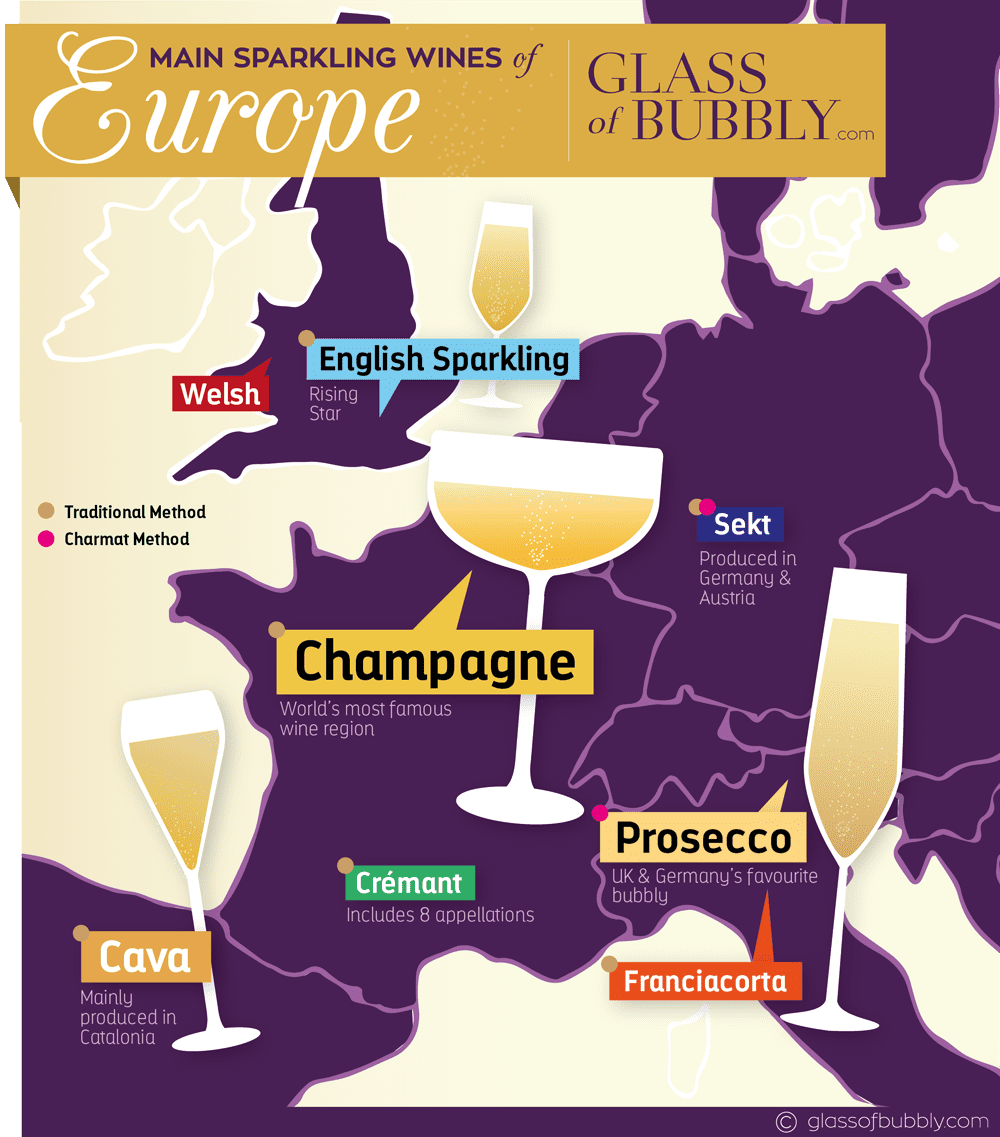
![]()
Oliver Walkey
Champagne and Sparkling Wine Writer, Focused on Bringing the Exciting and Fascinating World of Bubbly to You.
